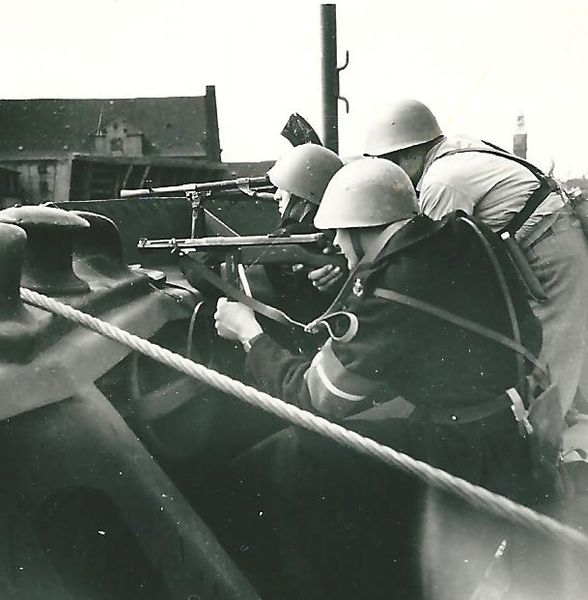Berntsen & Thomsen (2005)
 Berntsen & Thomsen (2005) carried out a study to test the reliability of memory. To do so, they wanted to test the accuracy of the memories of Danish World War II veterans. This study may be used for the following content in the study of the cognitive approach:
Berntsen & Thomsen (2005) carried out a study to test the reliability of memory. To do so, they wanted to test the accuracy of the memories of Danish World War II veterans. This study may be used for the following content in the study of the cognitive approach:
Discuss research methods used in the cognitive approach.
To what extent is one cognitive process reliable?
Brown & Kulik (1977) defined flashbulb memories as vivid and detailed memories for the personal context of the reception of consequential and surprising news, such as the assassination of President Kennedy in 1963.
To support their claims, Brown & Kulik carried out a series of interviews in which they asked people about their memories of the days that John F Kennedy and Martin Luther King Jr were assassinated. The researchers concluded that flashbulb memories did exist - and that they were based on both personal significance of the event and an emotional response of surprise. However, in the original research, surprise was not measured. In addition, the details about what the participants were doing on the days of the assassinations could not be verified.
Bernsten and Thomsen (2005) wanted to test the accuracy of flashbulb by using a historical event for which factual information could be verified. They chose to use Danish veterans from World War II.
The sample consisted of 145 Danes between the ages of 72 and 89. They were obtained through a snowball sampling method. The participants were asked for their memories of first hearing the news of the Danish occupation (April 1940) and liberation (May 1945). They were also asked to indicate what their role was in the war. They were also asked for detailed descriptions of their most positive and most negative memories of the war.
After this information was gathered, the researchers gave them a questionnaire which asked for specific factual details about the occupation and liberation of Denmark that could be matched to historical data. A younger control group was given the exact same questions in a short questionnaire titled “Historical Details From World War II."
For example, participants were asked to describe the weather; they were also asked whether it was a workday or a Sunday and, if a workday, which day of the week it was. For the liberation, they were also asked for the time of the radio announcement of the German surrender.
Almost all participants in the sample of older Danes reported memories of the invasion and liberation. Their answers to factual questions - for example, the weather, the day of the week, the time of the announcement - were compared to historical records as well as the answers from a younger control group. The older participants were far more accurate; on average, they provided accurate answers to 55% of the questions versus 11% in the control group.
Participants with reported ties to the resistance movement had more vivid, detailed and accurate memories than did participants without such ties. Ratings of surprise were unrelated to the accuracy and clarity of the memories.
The results of this study are quite impressive because the participants are recalling memories that are over 60 years old. It appears to support the theory of flashbulb memories as proposed by Brown & Kulik. The events that the participants are recalling had deep, personal meaning in their lives. On the other hand, Brown & Kulik's proposal that surprise is a key element in the creation of flashbulb memories is not supported. Perhaps the fact that Brown & Kulik chose to investigate responses to assassinations of public figures, is the reason that they attributed the creation of these memories to surprise.
Another strength of this study is the presence of a control group. Without a control group, it would not be clear how much of the information offered by the witnesses could be provided by people who were not present during the event but were simply guessing or making inferences based on general knowledge. The researchers have provided a control group, although one that is significantly younger than the participants. But because the researchers are trying to find out what would happen if people just guessed which day of the week or what type of weather it was on the day of the event, the age of the control group is not highly relevant.
One general problem with studies of this nature is that it is generally impossible to establish exactly which details witnesses observed and paid attention to during the event. That is why the choice of weather and day of the week are good ones for this study - they are factors that most of us notice on a day-to-day basis.
Lastly, one limitation of this study is the use of a network sample. Since many of the participants knew each other, it could be that they have spent a lot of time together discussing the past, which may have had an effect on individual memories.
Berntsen, Dorthe and Dorthe K Thomsen (2005). Personal Memories for Remote Historical Events: Accuracy and clarity of flashbulb memories related to World War II. Journal of Experimental Psychology: General, 134, No. 2, 242–257.
Brown, R., & Kulik, J. (1977). Flashbulb memories. Cognition, 5, 73–99.

 IB Docs (2) Team
IB Docs (2) Team
